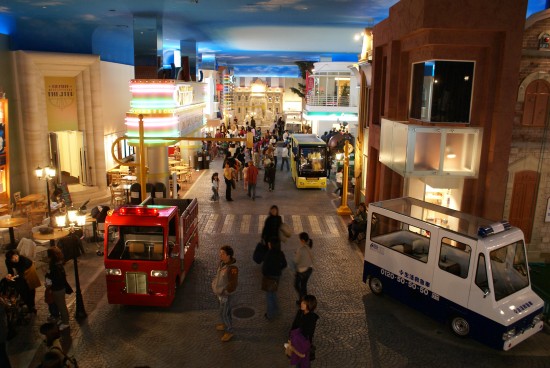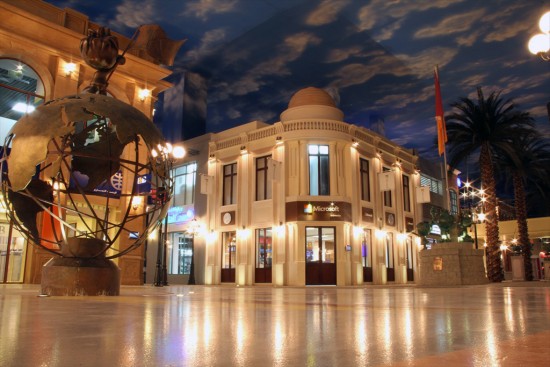Can you please describe the concept of KidZania?
KidZania provides a safe, unique and very realistic educational urban environment that allows children of ages 4-14 to role-play traditional professions and occupations. Core elements of the KidZania experience are the city's own functioning economy and its recognizable destinations in the form of ‘establishments’ sponsored and branded by leading multinational and local brands. As in the real world, children perform ‘jobs’ and are either paid for their work or pay to shop or to be entertained.
In your opinion, what is the role of entertainment in shopping centers?
Entertainment experiences are critical in contemporary shopping center environments. In KidZania's view, the key method to drive customers to retail destinations is through the offering of experiences that inspire them. Entertainment is the leading experiential driver. At KidZania, we provide a unique and compelling entertainment experience and environment that customers cannot receive at home or online.
KidZania is uniquely appealing as a leisure destination for shopping centers and malls. KidZania locations draw an average of 27% from a 90-minute catchment area and beyond, attracting large visitation segments which are usually uncaptured in saturated markets. It is also a destination for the most attractive shopping center demographics: parents 25-45, with discretionary income, homemakers who purchase home furnishings and accessories, electronics and appliances, clothing and school supplies for their children. KidZania offers children a five-hour experience, during which parents have plenty of time to shop and spend.
Describe the experience offered in your centers. What distinguishes you from the competition?
KidZania is the originator of the role-playing theme park concept. Our parks offer the most fully integrated, detailed and realistic role-playing environment for children and families. Our facilities usually occupy a combined 7,000 m² over a ground floor and mezzanine. Each facility fronts a full-sized, real airplane–a trademark of our brand.
The essence of our business, however, is customer experience. While the KidZania urban cityscape captures the imagination, the key to our success is service. We understand that each visit must exceed our visitors' expectations. Like any hospitality-based business, the success of each visit determines whether our customer will return. Therefore, we place special focus on employee training to ensure that children of all personality types engage and interact confidently and safely.
Education is a powerful learning tool. At KidZania, children learn about society, the importance of work, financial literacy and adult professions. As kids build on their experience, they develop independence, social skills and a sense of monetary value. At the same time, they learn valuable lessons associated with each occupation, as the KidZania experience is designed to reflect school curricula around the world.
How do you select new markets and locations for your brand?
We start out with some general criteria for new markets. KidZania is designed to draw customers from the local resident population. Specifically, we require a local population of over 4-5 million and a children population above 700,000 within a short travel catchment area as a minimum. That population must have sufficient discretionary spending power to support the KidZania model and for repeat visitation. Preferred markets are also safe, secure and politically and economically stable.
We then look at factors such as tourism, competitive and complementary attractions, pricing potential, seasonal factors such as weather conditions, transportation infrastructure, parking and accessibility. Other important elements include mall culture, the sophistication of brand sponsorship in the market (since our experience, environment and business model require the participation of dozens of recognizable brands) and a market focus on education.
KidZania is currently operating in 15 locations. There are only two centers in Europe (Lisbon and Istanbul), while London and Moscow were chosen as your future locations. Is there a reason why European cities were not targeted first?
We opened our first facility in Mexico City 15 years ago. I designed our international growth strategy to build regionally from flagship locations. While KidZania owns and operates its three parks in Mexico, outside Mexico we license our business on a country-by-country basis. Our first international location was Tokyo in 2006.
Throughout this period, we have always regarded Western Europe and the United States as having the highest expectations of this more sophisticated model. As our model has evolved, we are now ready to enter both markets. In Europe, Lisbon continues to be an excellent location, especially as a test market for European tastes. London will be our European flagship and will be the leading catalyst for the rapid expansion of our European business. Europeans will become very familiar with KidZania at Westfield London and its array of entertainment and educational content. We are already in discussions with powerhouse licensees for France and Italy and we expect that markets like Germany will follow close behind. In the US we have chosen to operate the business directly with a joint venture partner and we will issue a relevant announcement soon.
In your opinion, what will be the new trends in the retail industry in the coming years? Will the concept of entertainment see further development?
The crossing of marketing initiatives with brands and entertainment is nothing new. As a business concept, it has evolved from the early days of radio and the advent of television to very sophisticated programs within the film industry. But the mix of entertainment content and experiences in the retail environment is only starting to be realized.
The blending of retail and entertainment will be the key trend in the coming years. Interactivity that blurs the lines between these two previously distinct categories will be the key factor in driving shopper dwell time, purchases, per capita spending and brand engagement.


















